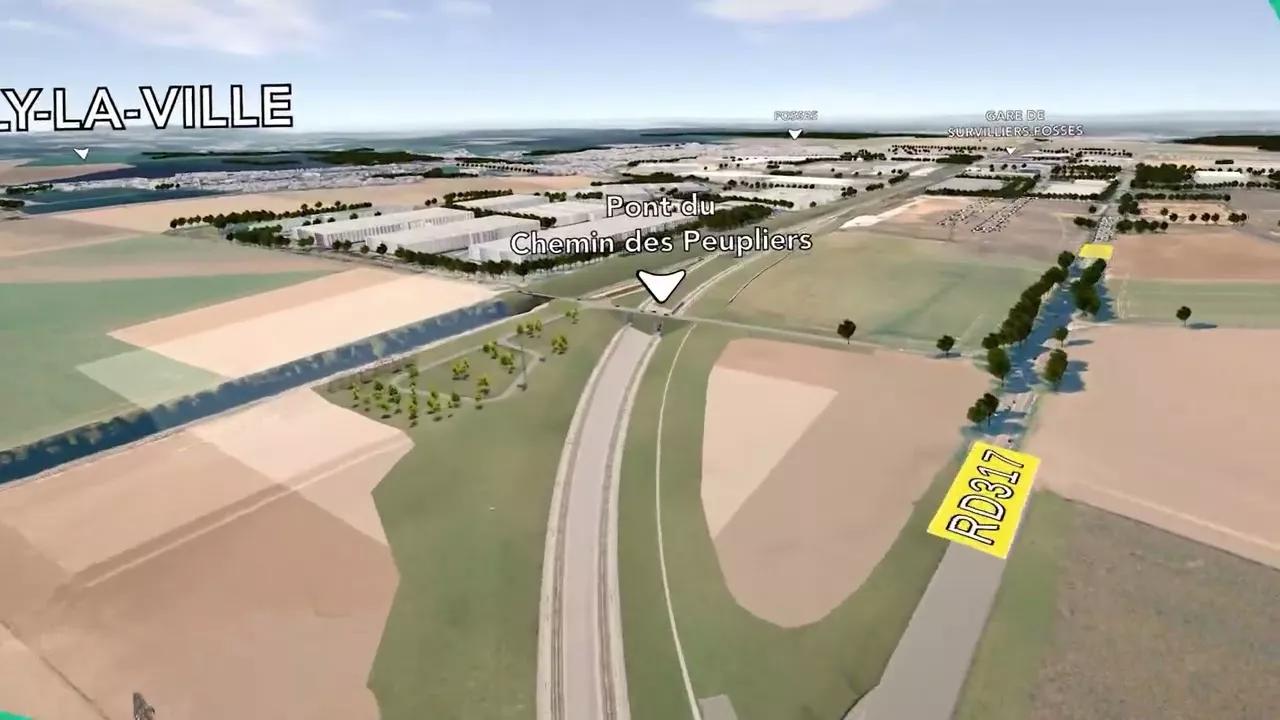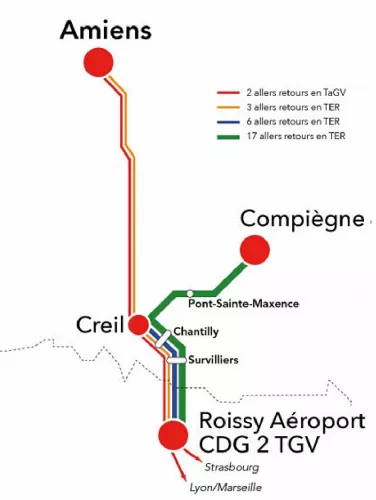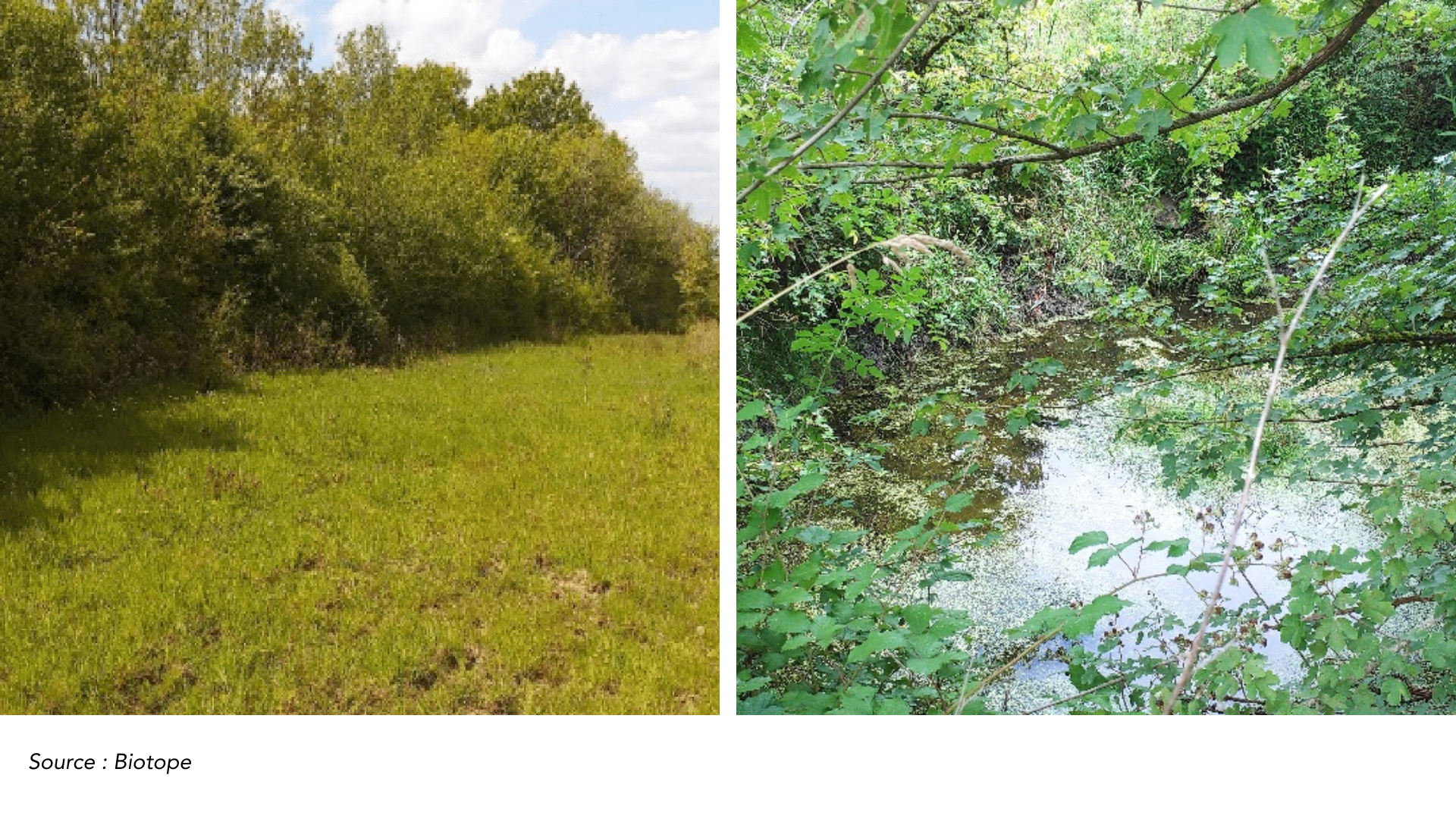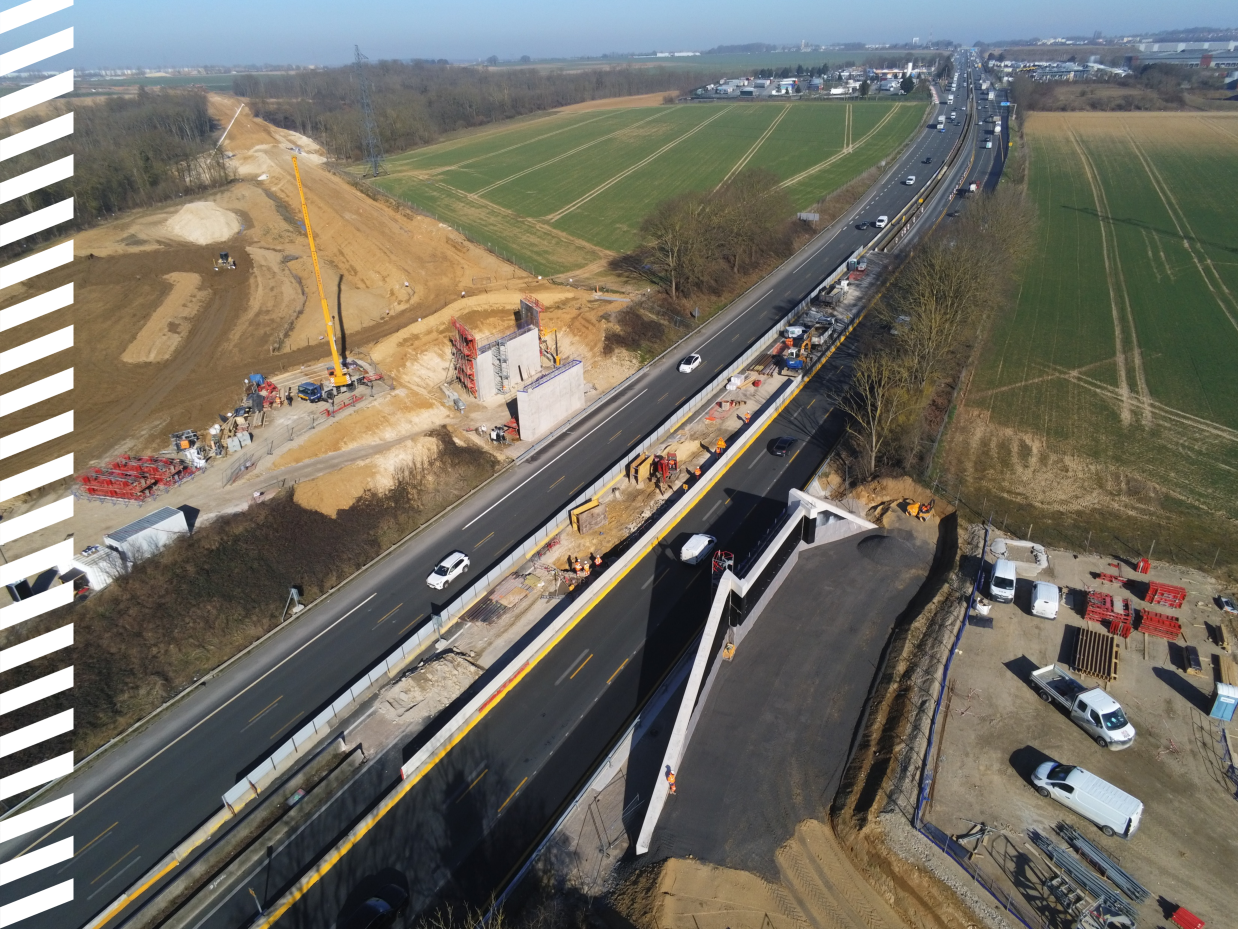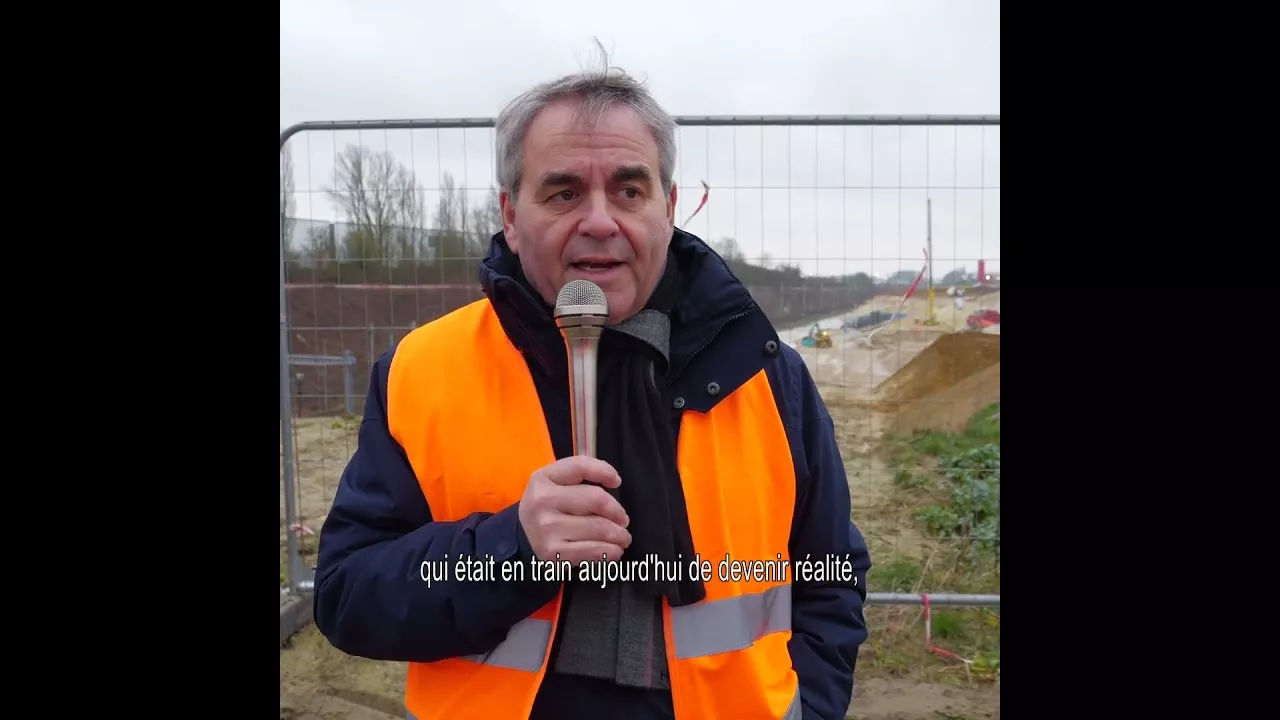Alongside the introduction of new rail services (both high-speed and regional trains), the Roissy–Picardie rail link aims to address national, interregional and local travel needs by:
- Improving daily travel to the Roissy economic and employment hub from Picardy and north-eastern Val-d’Oise;
- Supporting urban and regional development in the areas served;
- Facilitating high-speed rail access for residents of Picardy and the Hauts-de-France region;
- Enhancing rail-to-air connections at Aéroport Charles de Gaulle 2 TGV station;
- Providing a new route into Île-de-France for people living in Hauts-de-France, helping relieve pressure on services to Paris Gare du Nord.
The project is part of a wider commitment to sustainable mobility by encouraging modal shift from road to rail.
Funding
The Roissy–Picardy rail link is jointly funded by the European Commission, the French State, the Hauts-de-France Region and eleven local authorities in the Hauts-de-France area. The project is being delivered by SNCF Réseau and SNCF Gares & Connexions, each within their area of expertise.


